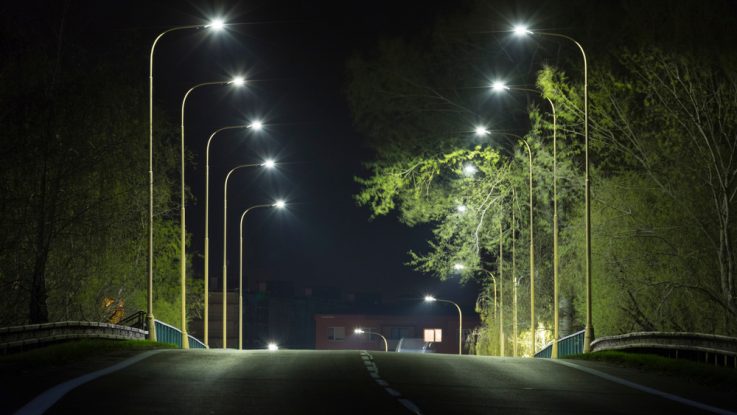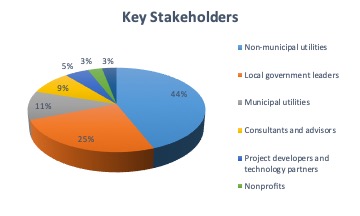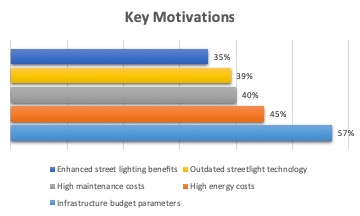
(They have more in common than you think.)
By Michael Tschirret, Marketing Communications Manager for Smart Cities, Sensus
Having just returned from Smart Cities Connect, two things were made abundantly clear: the definition of what makes a city smart has no concrete answer, and smart lighting is a rising star in the industry.
For two days in Denver, we explored, probed and discussed everything “Smart City”. Whether it was bringing up difficult, thought-provoking statements during educational sessions or through our larger-than-life LED video display in the expo, we weren’t afraid to challenge attendees and many conventionally held opinions. But interestingly enough, most of my one-on-one booth conversations began with a simple question—what makes a city smart?
The answer to that question is broad. For the citizens of Flint, Michigan, clean drinking water certainly qualifies it as a smart city. For Dallas, Texas, it may be interactive video kiosks or directions to an empty airport parking space. Basically, there isn’t a wrong answer.
But here’s the rub: you have to start somewhere. And if I’m a city, there’s no better place to “Start Me Up” than smart lighting. With smart lighting, cities can reduce crime “Undercover of the Night.” And well-lit areas are comforting while you’re just “Waiting on a Friend.” Bad puns, but all ring true.
So where to begin with smart lighting? It’s a great point of entry for any smart city due to the low cost, easy-to-recognize benefits to residents and acts as an infrastructure springboard for cities to go smarter. A smart lighting communication network can be utilized in place to support other utilities and smart sensors. Consider the following data from our recent survey, How Cities Are Using Smart Street Lighting. If you implement smart lighting, you can expect to see savings as follows:
- Smart Lighting: Save 80% or more in maintenance costs.
- Smart Gas: Save up to 50% on operational and maintenance expenses.
- Smart Water: Save up to $1M per year in leak forgiveness, bad debt and collections.
- Smart Grid: Save over $15M by reducing restoration efforts by 3 days.
And just who are the key stakeholders in smart lighting? Their roles vary:

Smart lighting solutions play a key role in establishing a safe, high-quality place to live. Forty percent of lighting constituents say that safety on streets and in parks are important for the following reasons:
- Driver and pedestrian safety
- Crime deterrence
- Neighborhood and public space security
- Community connectivity and pride
So far, sounds good, right? “But who’s going to pay for this?” you ask. It’s time to get strategic—think about sharing financing across other infrastructure projects to make paying for smart lighting more palatable. In our experience, one-third of all cities need assistance with financing. Here are some ways to help clear that hurdle:
- Combine budgets with other departments and distribute applications.
- Share resources and benefits with external entities.
- Engage in public-private partnerships like ESCOs and EPC.
- Partner with third-party investors.
Finally, you need to constantly be asking the right questions from start to finish in this process. Here are a few to consider:
- Who are the influencers of smart lighting?
- Which other smart city projects might be complemented by smart street lighting?
- Who owns your streetlights, and who pays for their operation and maintenance?
- Who is responsible for making decisions and managing budgets?
Now that we’ve covered the basics of the topic, you may want to dive a bit deeper into how smart lighting can become the foundation for your smart city. Here are a few resources to help out:
- Video: The Role of Smart Lighting
- Viewpoint: The Role of Smart Lighting
- eBook: Illuminate Your City in More Ways than One
Smart lighting is truly the gateway to a smarter city. And at the end of the day, cities that know more, save more, while their citizens enjoy a significantly increased quality of life. Get illuminated!
Michael Tschirret is a Marketing Communications Manager at Sensus. He is responsible for all outbound marketing, campaigns and events involving Smart Cities, Smart Lighting and the Internet of Things (IoT). Entering his fourth year at Sensus, Michael previously supported marketing efforts for the FlexNet Communications network.
Prior to Sensus, Michael was the Marketing Communications Manager for Wireless and Fiber Optic test and measurement solutions at Viavi. He has over 20 years of wireless and communication network expertise, to include product marketing and business development positions at Nortel and Agilent Technologies.
Michael holds a B.S. degree from the Florida State University, and an M.S. in Urban Planning from Virginia Tech.



